Common Orthodontic Problems
Class II

Class II problems represent an abnormal bite relationship in which the upper jaw and teeth are located in front of the lower jaw and teeth. Class II patients usually exhibit a convex facial profile with a recessed chin. A skeletal Class II problem occurs when the upper molars are forward of the lower molars. This gives the patient the appearance of having a recessed lower jaw, a protruding upper jaw, or both.
Class III
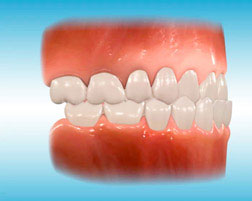
Class III problems are also primarily genetic in origin. In this instance, the lower jaw and teeth are positioned in front of the upper jaw and teeth. The lower jaw may appear to be excessively large, but in many cases the lack of upper jaw development is at fault. Several treatment options are available to correct a Class III problem.
Pseudo Class III
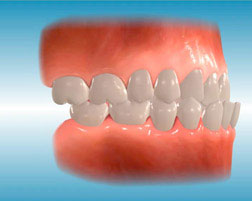
Pseudo Class III, particularly in younger patients, is a function of habit rather than hereditary factors. A misaligned bite may cause the lower teeth to bite forward of the upper teeth, giving the appearance of a Class III.
Crowding
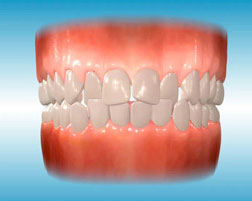
Crowding of the teeth is probably the most common orthodontic problem. Although many factors contribute to dental crowding, this problem typically stems from a discrepancy between the space in each jaw and the size of the teeth.
Crowding is often one of several orthodontic problems. Crowding can be the cause or result of other problems, such as impacted teeth or retained teeth.
Spacing
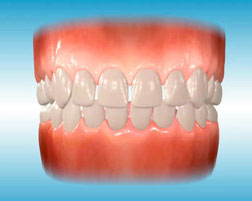
Spaces between teeth are another common problem associated with the need for orthodontic care. Like crowding, spacing may be related to a tooth-to-jaw size disharmony. Spacing may occur between the front and the back teeth. Tooth size discrepancies, such as smaller teeth or abnormally shaped teeth, can also create abnormal spacing.
Openbite
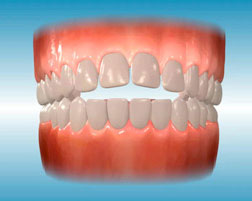
An openbite can occur with the front teeth, known as an anterior openbite or with the back teeth, referred to as a posterior openbite. An anterior openbite is the lack of vertical overlap of the front teeth and can usually be traced to jaw disharmony or habits such as thumb sucking or the posture of the tongue pushing against the front teeth. A posterior openbite is a problem in which the back teeth do not meet vertically, which keeps the jaw from functioning properly.
Incisor Overbite
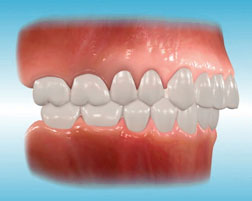
Also known as an overbite, a deep bite is excessive vertical overlapping of the front teeth and is generally found in association with a discrepancy between the length of the upper and lower jaws, that usually results in excessive eruption of the upper or lower incisors, or both.
Exessive Gingival Display
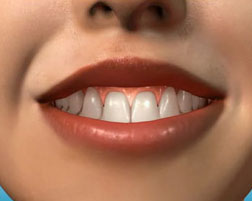
Also known as a gummy smile, this orthodontic problem gives the appearance of excessive exposed gums on the upper arch. There are several treatment options for this problem. In severe cases, corrective jaw surgery may be necessary to actually shift the jaw upward vertically reducing the amount of exposure of the upper gum tissue.
Crossbite

A posterior crossbite will usually result from a narrow upper jaw or abnormally wide lower jaw. A narrow upper jaw will often force a patient to move the lower jaw forward or to the side when closing into a stable bite. When closed into this accommodating position, the lower teeth are located outside.







